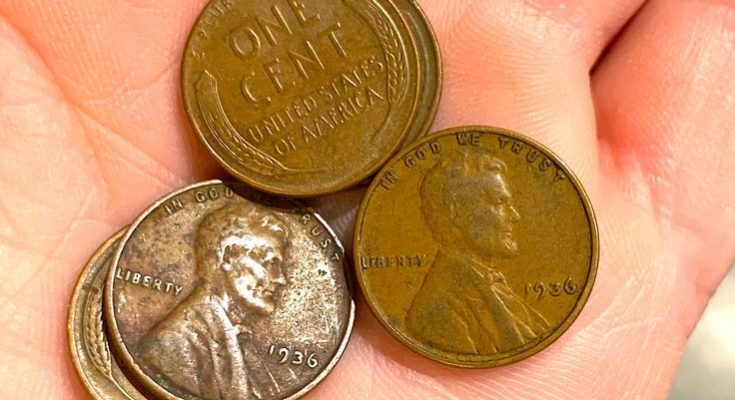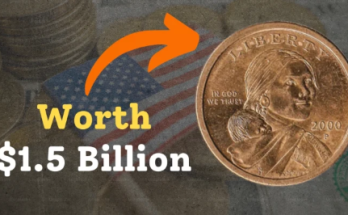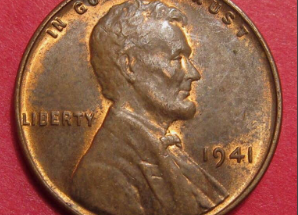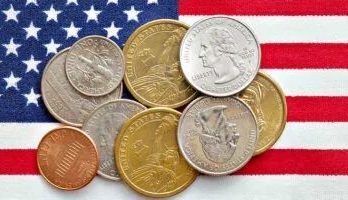Today, I’m going to show you how to tell if you’ve got a valuable 1936 wheat penny worth a lot of money or a 1936 Lincoln cent that’s worth only a few cents over face value.
 There are many factors that go into determining the value of a 1936 penny, including:
There are many factors that go into determining the value of a 1936 penny, including:
- Where the coin was struck — Was it made at the Philadelphia, Denver, or San Francisco Mint?
- The overall grade and condition of the coin — Is it in uncirculated condition or worn?
- The presence of any varieties or errors — Does the coin have any unusual markings on it?
I’m going to help you answer these and other questions you may have about your 1936 wheat penny.
How Much Is A 1936 Penny Worth Today?
This is probably the question that led you to this article. So I won’t keep you waiting for an answer.
First, you need to know where your coin was minted — here’s how to tell…
Look at the obverse (heads side) of your penny, and check under the date. Do you see a little letter under the date? That’s the mintmark.
If there is a mintmark, is it a “D” or an “S”?
- If it’s a “D” mintmark, the coin was made at the Denver Mint.
- If it’s an “S” mintmark, it was made at the San Francisco Mint.
You don’t see a mintmark
- Ah, that’s normal, too. That means it was struck at the Philadelphia Mint.
OK, now that you know where your 1936 penny was minted, let’s see how much it’s worth…
1936 Penny Value (No Mintmark / Philadelphia Mint)
1936 pennies from the Philadelphia Mint are quite plentiful and are the most common of all 1936 pennies minted. A total of 309,632,000 were made at the Philly Mint in 1936 — and many are still around today.
- If found in pocket change, your 1936 Lincoln cent is worn. And while they are obsolete, 1936 wheat pennies really aren’t worth very much — perhaps 5 to 10 cents.
- In uncirculated condition, the 1936 penny value is quite a bit higher — about $5 and up.
You may be wondering how in the world you could find an unworn 1936 penny. The fact is many were saved in roll quantities. So there are still plenty available for the coin collectors who need them.
What’s the most valuable no-mintmark 1936 penny?
That claim goes to a 1936 Philly cent graded MS-66 Red by Numismatic Guaranty Corporation (NGC). That specimen sold for $2,862 at an auction in 2012.
1936-D Penny Value (Denver Mint)
1936 Lincoln cents made at the Denver Mint are generally much scarcer than their Philadelphia-minted counterparts — but they’re still common enough to be encountered with some frequency. A total of 40,620,000 were minted, and they’re available in all conditions, ranging from well worn to uncirculated.
- A 1936-D penny that you’ve found in circulation is very likely quite worn. It’s worth about 7 to 15 cents.
- Uncirculated examples are worth approximately $5.50 and up.
What’s the most valuable 1936-D penny?
It’s a 1936 Lincoln cent graded MS-67+ Red by Professional Coin Grading Service (PCGS) and approved by Certified Acceptance Corporation (CAC). It sold for $4,230 at an auction in 2016.
1936-S Penny Value (San Francisco Mint)
Among all regular-issue 1936 Lincoln cents, the San Francisco version is the scarcest of the 3 — with a mintage of only 29,130,000. Still, there are many survivors… certainly enough to satisfy coin collector demand.
- If you find a worn 1936-S penny in circulation, its value is between 10 and 20 cents.
- An uncirculated 1936-S penny is worth around $6 and up.
NOTE: As with most other Lincoln wheat cents, examples of the 1936-S that have their original reddish-orange, like-new color with brilliant luster are worth more than those with a chocolate-brown patina or splotchy red-brown coloration.
What’s the most valuable 1936-S penny?
The record price for a 1936-S Lincoln penny is for an example graded MS-67 Red by PCGS which sold for $5,060 in 2004.
Rare 1936 Wheat Penny Errors And Their Values
While all 1936 Lincoln cents are worth more than face value, the most valuable and rarest are those with errors and varieties.
These are some of the 1936 wheat penny errors that can be found in circulation today…
1936 Doubled Die Penny Error
By far, the most sought-after 1936 wheat penny error is the 1936 doubled die penny. There are 3 versions known.
The most valuable is the Type I version which has these characteristics:
- Shows doubling on the obverse.
- Doubling is seen in the inscriptions IN GOD WE TRUST and LIBERTY, as well as in the date.
- The doubling can be easily seen with the naked eye!
The 1936 doubled die penny is perhaps as scarce as the rare 1917 doubled die penny and is far more dramatic in appearance. However, for whatever reason, the 1936 doubled die sells for much less than the 1917:
- In moderately worn grades, a 1936 doubled die cent is worth $100 to $200.
- Uncirculated versions start at around $500 and up.
1936 Off-Center Penny Error
Find a 1936 Lincoln cent that wasn’t struck quite on square — or “circle”?
Well, that’s good!
- Any off-center 1936 pennies are worth a little extra money. Pieces that are 5% to 10% off center are worth $3 to $5.
- If you find one with the date fully visible and 50% or more of the design missing, you’ve just landed a 1936 wheat penny worth $100 or more!
1936 Penny With Struck-Through Grease Error
A grease-filled error occurs when oil or other viscous fluid gets caught in some of the recesses of the design or lettering on the coin.
This can prevent the entire design from being properly struck — leaving behind faint or missing details where the grease was.
- 1936 Lincoln cents with these types of struck-through errors are worth about $5 and up to collectors who pursue such pieces.
1936 Die Crack Penny Error
Hairline cracks may begin showing on aging dies — and these cracks on the die can result in raised lines on the coin. These lines (called die cracks or die breaks) are cool varieties that many numismatists love to collect.
Among the most desirable types of die cracks on old Lincoln wheat pennies are so-called BIE errors — small, vertical die cracks roughly resembling a capital letter “I” and forming between the “B” and “E” of “LIBERTY” on the obverse.
There are thousands of known BIE varieties. So many, that some Lincoln penny enthusiasts collect BIE errors by year.
- Many collectors will pay $10 to $20 for a nice example of a 1936 Lincoln cent with a BIE error.
What About 1936 VDB Pennies?
There really is no such thing as a 1936 VDB penny.



